Print Bed Heaters
After getting the new print bed plate, I really wanted to get a heater that was a lot faster than the unbelievably slow one that came with the Solidoodle 3.
I acquired four heated plates for testing, the winner gets installed, the others get used for other projects or eBayed.
02/23/2017 update: Keenovo quoted me a 6″x8″ silicon pad, so I ordered two of them (minimum quantity). Based on the 6″x6″ version, this new one will probably be the final one I test and will end up installing it. I’ll post test results once they arrive.
Test Environment
Not sophisticated, but enough to get a rough idea of how long each heater took. The test consisted of setting the heater on top of my new build plate, hot side down, of course. On the bottom of the plate is the temperature sensor, and it is the same sensor for every reading, and was not moved or modified once the tests began. Here’s a picture of one of the headers under test. Yes, I know the adjustable wrenches are acting as heat sinks, but this one heater just wouldn’t sit flat without it. Notice the sensor wires coming from under the plate:
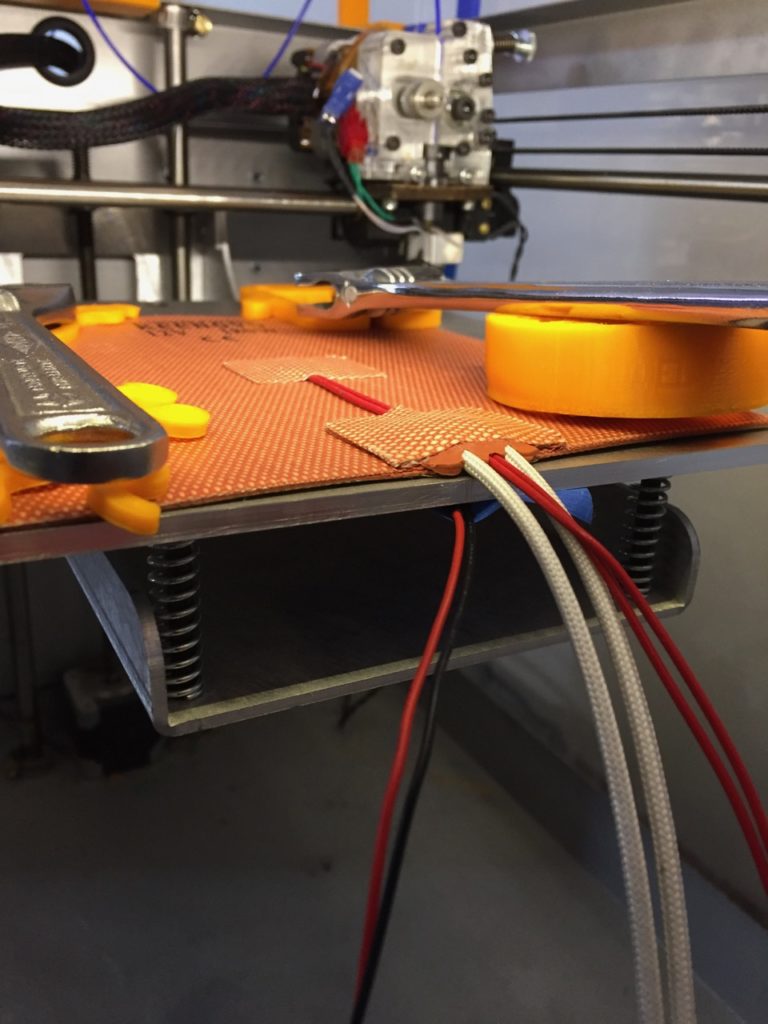
Just as a refresher in case you didn’t look at my other page, this build plate is 200 mm square and 4 mm thick. Ie, it’s a big more mass than the original.
The power supply is an Astron SS-30M, and power was switched to the heater via a 30 amp relay. Ie, the power supply had plenty of “umph” and everything in the power supply chain was able to handle much more current than any of these pads were pulling.
The test procedure was the same for all heaters:
- Position the heater on the build plate and let it adjust to room temperature, so starting point was usually around 22 degrees C, plus or minus a degree.
- Connected to the printer with Repetier, verified the sensor was working.
- Set the build plate temperature to 110 degrees, turned on the heater.
- Noted the time.
- Waited for the plate to reach 100 degrees, then noted the time.
- Waited for it to reach 110 degrees, noted the time.
- Let the heater sit for a while to verify it was able to maintain the 110 temperature.
Times are rounded to nearest minute.
Signswise 8″x8″ 12v 150 watts
This had a lot of great reviews on Amazon, so I bought it without thinking about the size issue. This was the fastest to heat up, but because the SD3 build plate has three holes in it, this heater would not work. This was a flexible silicon heater, using a wire rather than PC board traces which convinced me that a smaller silicon heater would probably be the best. It also has the thermistor embedded, so it’s one less thing to be done. You can see the heating wire loops in the reflection off the heating pad:
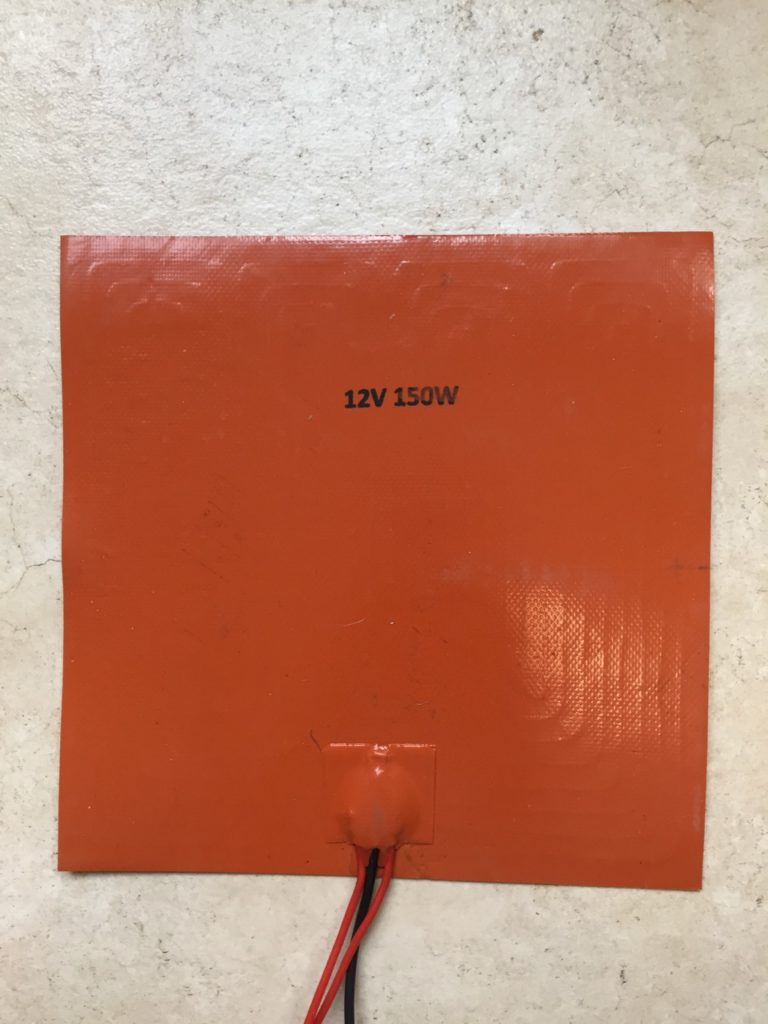
100 degrees: 8 minutes
110 degrees: 9 minutes
Keenovo 6″x6″, 12v, 180 watts
This was from eBay. Keenovo is well known, but I couldn’t find anyone selling this size of Amazon so eBay was my best alternate. It shipped from China and arrived two days after the order was placed, but that was with the express shipping. I really wanted one of their 6″x8″ versions but couldn’t find anyone selling them on-line except for a company I’d rather not deal with, so I emailed Keenovo directly. They have a 24 volt version but I’m trying to stick with 12 volts.

100 degrees: 7 minutes
110 degrees: 9 minutes
6″x8″ etched PC board, 12v
I bought this on eBay, and while it is well made, I found the PC board heaters were about 110 to maybe 130 watts, so they heated up slowly and barely reached 110.
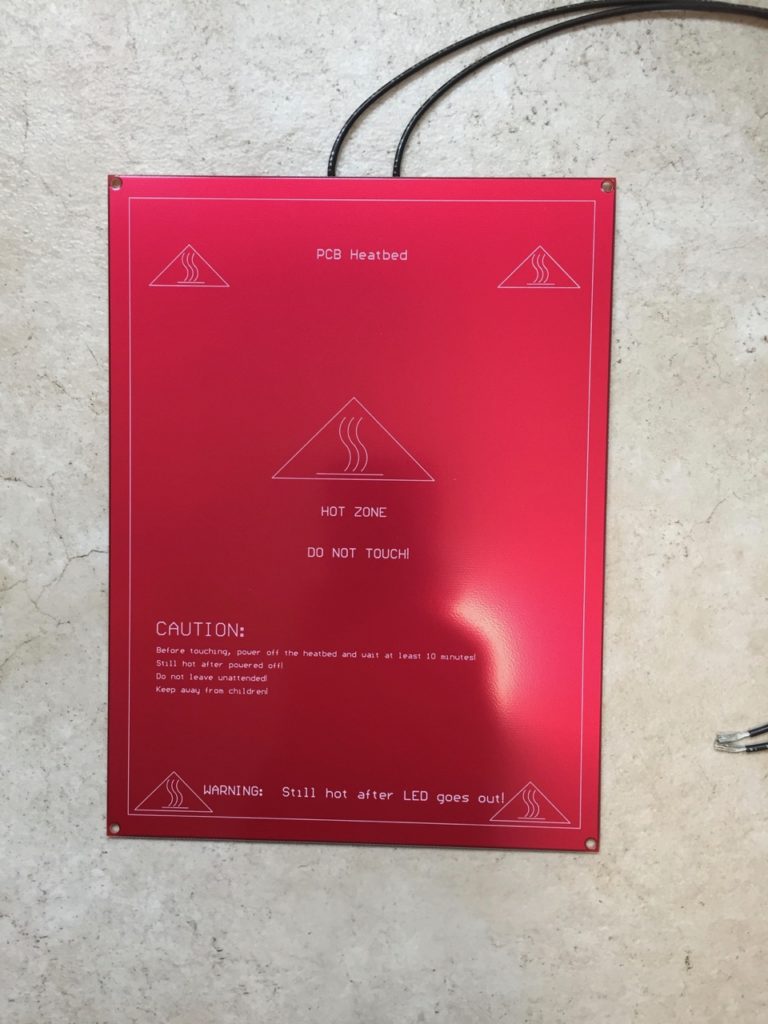
This shows the business side with all the traces:
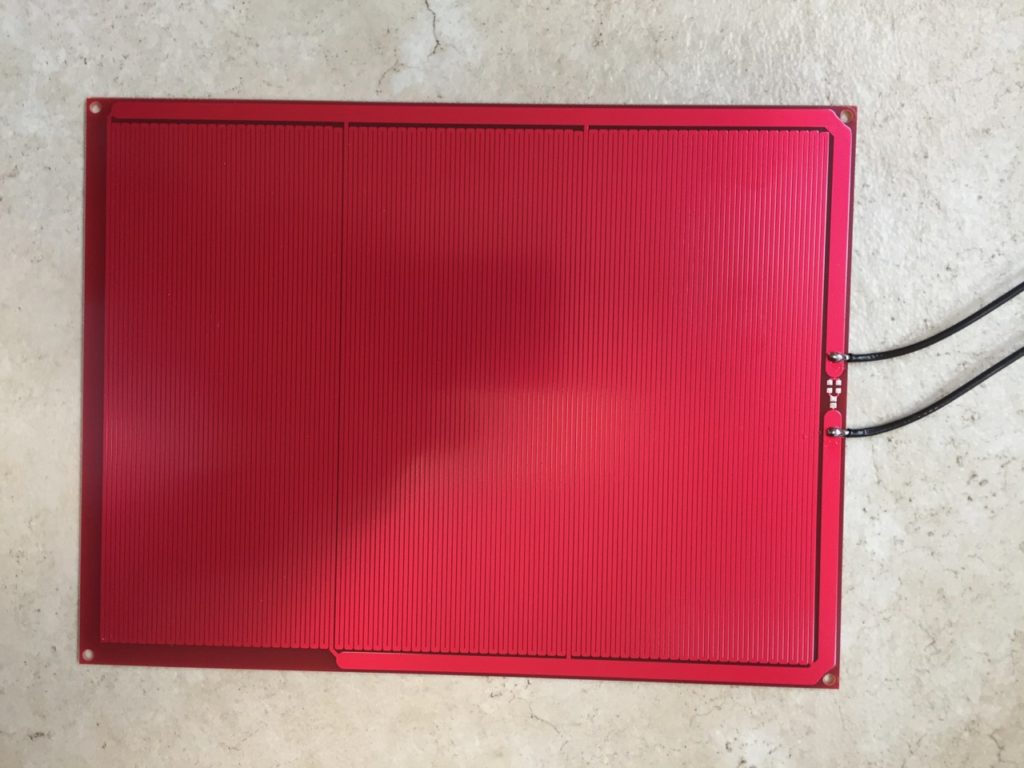
100 degrees: 14 minutes
110 degrees: 25 minutes
8″x8″ MK1 etched PC board, 12v
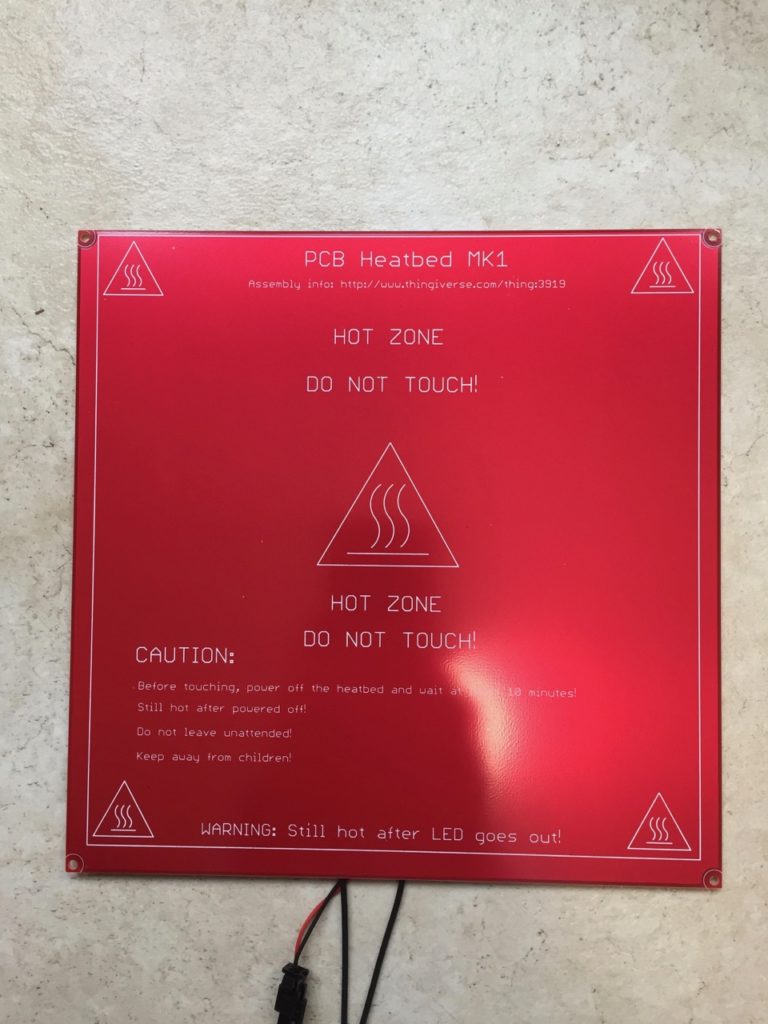
This was found through a web search and appears to be a standard MK1 heater, but it was not very impressive. This was the worst of the heaters I had tested, and I gave up after 25 minutes without it reaching 100 degrees. Lots of people talk about how this works great at low temperatures, but it doesn’t do well at high temps.
100 degrees: 17 minutes
110 degrees: gave up after 25 minutes
Summary
The best heater for my application (so far) is the Keenovo 6″x6″ silicon, but I’m hoping to hear back from them about availability of a 6″x8″ version.
Absolute worst was the MK1 etched heater. The etched ones were the slowest. If you’re printing something that doesn’t need much heat then these would be fine, but just didn’t work for my requirements.